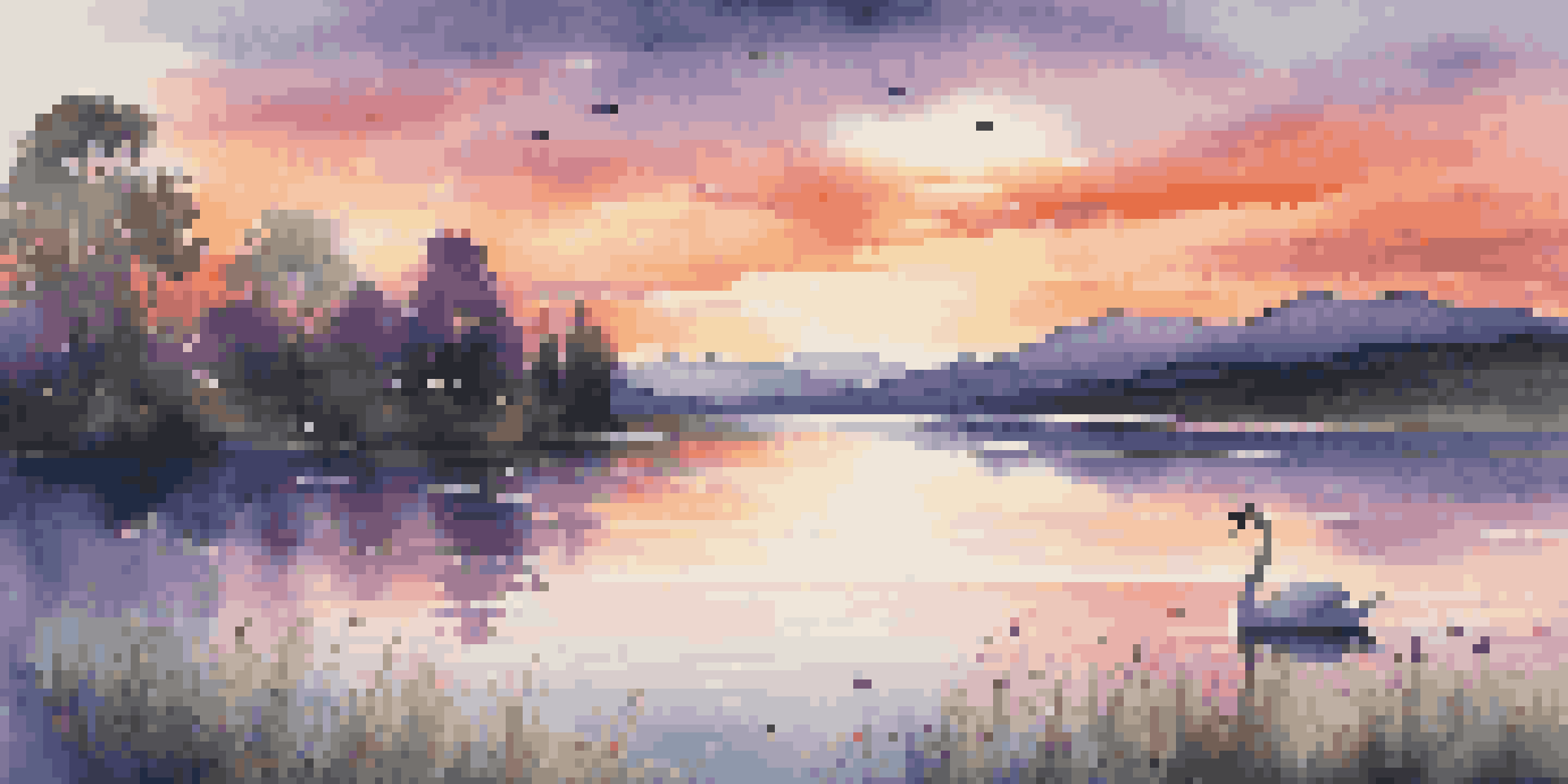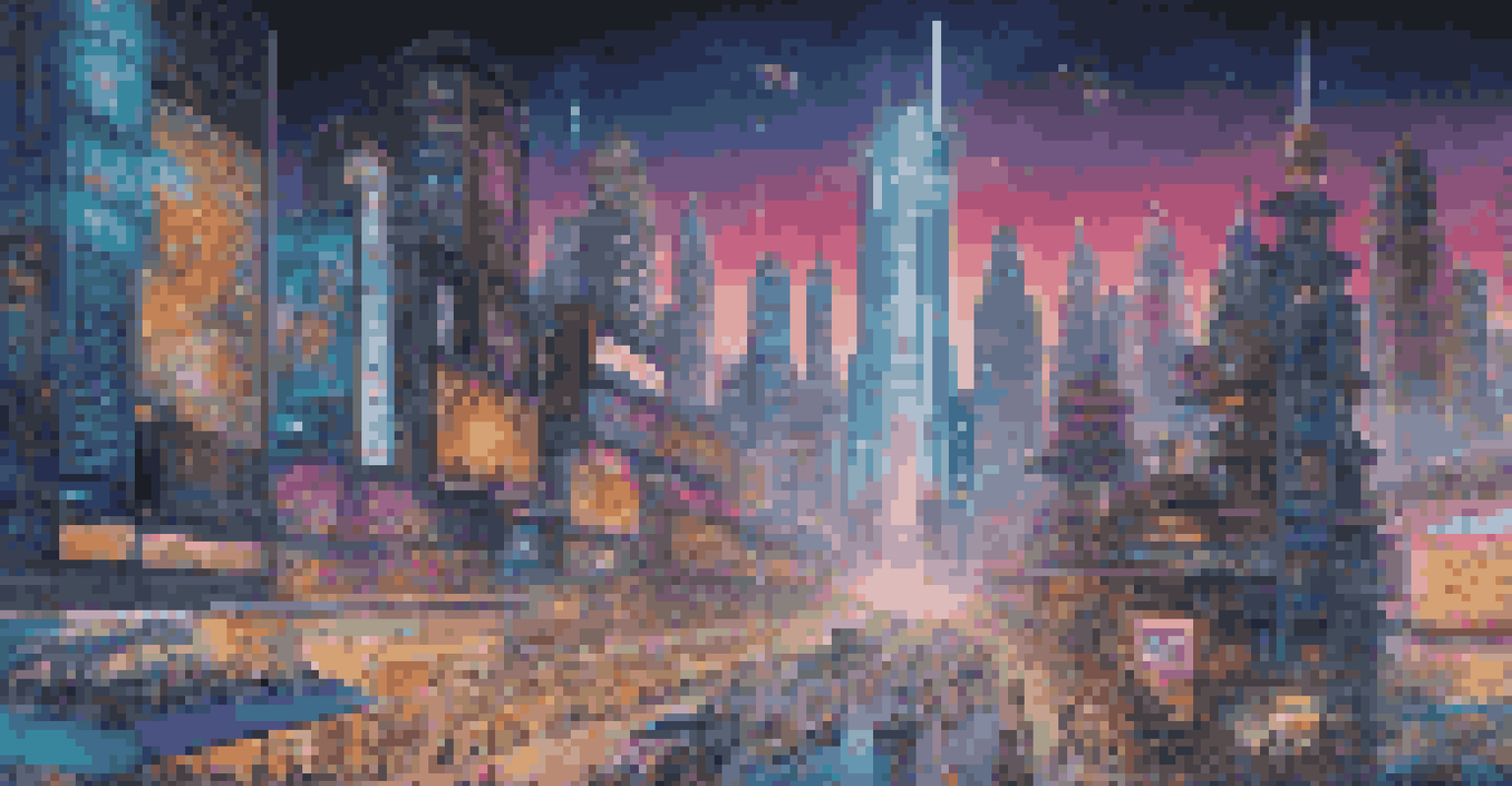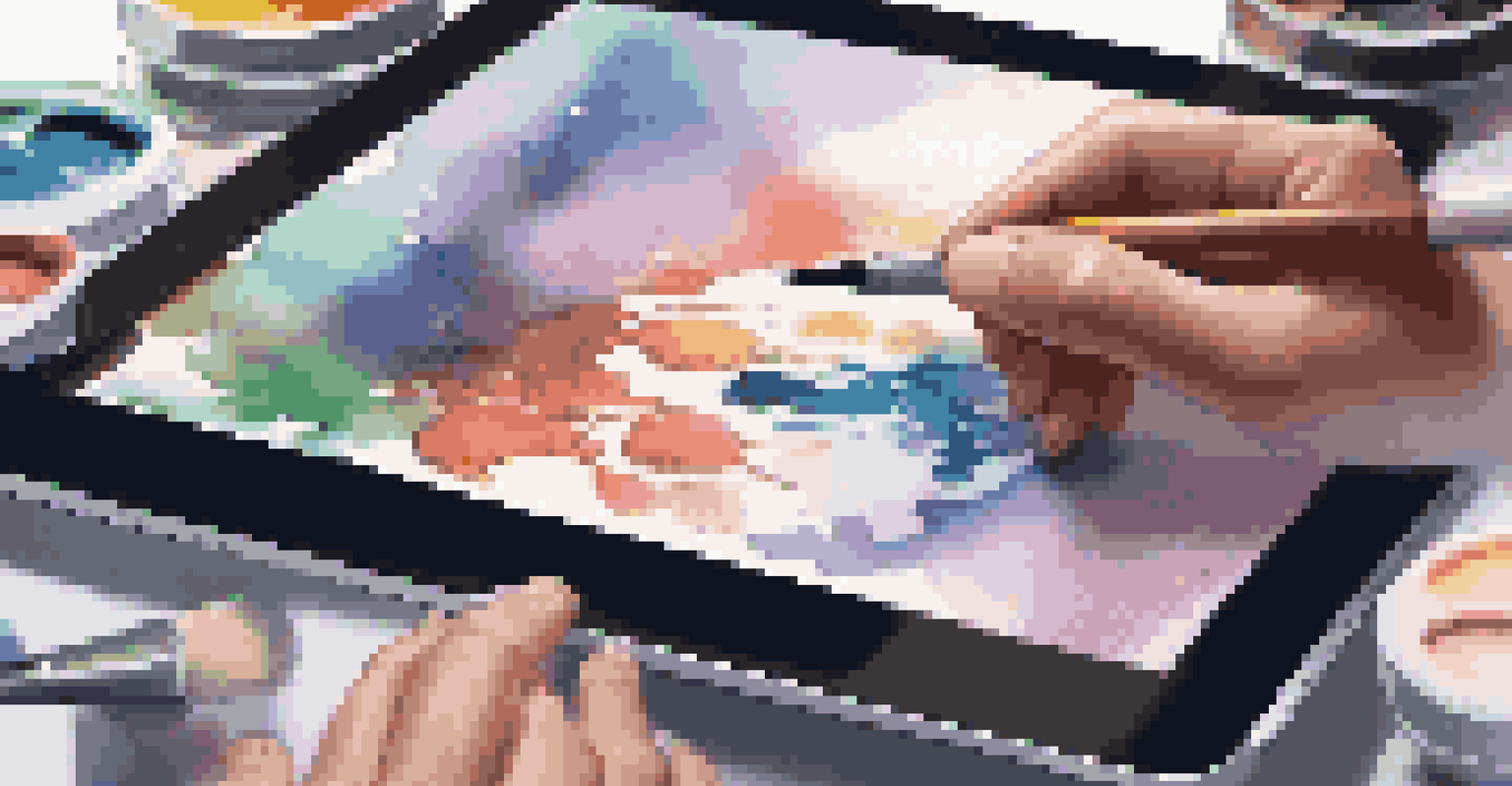Exploring the Relationship Between Art and Technology

The Historical Intersection of Art and Technology
Throughout history, art and technology have always been intertwined. From the invention of the printing press to the development of photography, each technological advancement has opened new doors for artistic expression. Artists have often utilized the tools of their time to push creative boundaries and explore new mediums.
Art is not a mirror to hold up to society, but a hammer with which to shape it.
For example, the emergence of oil paints in the 15th century allowed artists to experiment with color and texture in unprecedented ways. Similarly, the advent of digital tools in the late 20th century revolutionized how artists create and distribute their work. This historical context helps us appreciate the ongoing relationship between these two fields.
Today, we see this connection continue to evolve as artists embrace new technologies, shaping the future of creative expression. By understanding this history, we can better appreciate the innovations that arise when art and technology collaborate.
Art as a Response to Technological Advances
Art often serves as a reflection of the technological landscape of its time. As new technologies emerge, artists respond by addressing their implications and meanings in society. For instance, during the Industrial Revolution, artists like the Impressionists captured the changing urban environments and the impact of mechanization on human life.

In today’s digital age, artists are exploring themes of connectivity, artificial intelligence, and virtual reality. These mediums allow them to comment on contemporary issues, such as surveillance and data privacy, through their work. This dynamic shows how art can critically engage with technology rather than merely adopt it.
Art Reflects Technological Change
Artists respond to technological advancements by exploring their societal implications, creating a dialogue that deepens our understanding of both art and technology.
By creating art that reflects technological advancements, artists encourage society to contemplate the consequences of these changes. This crucial dialogue fosters a deeper understanding of our relationship with technology and its influence on our lives.
The Role of Digital Art in Modern Creativity
Digital art has transformed the creative landscape, making art more accessible than ever before. With tools like graphic design software and digital painting applications, artists can create stunning visuals without the constraints of traditional materials. This democratization of art allows a wider variety of voices to emerge in the creative community.
The greatest artist is not necessarily the one who creates the most, but the one who inspires the most.
Moreover, the internet has enabled artists to share their work globally, reaching audiences far beyond their local communities. Platforms like Instagram and Behance have become vital spaces for artists to showcase their portfolios and connect with potential clients. This shift has fostered a vibrant online art culture that thrives on collaboration and innovation.
In this digital age, art is no longer confined to galleries and museums; it permeates everyday life through social media and digital storytelling. As we embrace these new forms of expression, we recognize the profound impact of technology on how art is created, experienced, and shared.
Interactive Art: Merging Experience and Engagement
Interactive art represents a fascinating fusion of creativity and technology, allowing audiences to partake in the artistic experience. This genre invites viewers to engage with the artwork, transforming passive observation into active participation. Installations that respond to touch, movement, or sound exemplify this engaging approach.
For instance, projects like 'The Obliteration Room' by Yayoi Kusama invite participants to add colorful stickers to a white room, creating a living piece of art. Such interactions encourage deeper connections between the viewer and the artwork, blurring the lines between creator and audience. This shift enhances the emotional and intellectual impact of the art experience.
Digital Art Expands Accessibility
The rise of digital art tools and online platforms has democratized the creative landscape, allowing diverse voices to flourish and reach global audiences.
As we explore interactive art, we begin to understand how technology can elevate creative expression. These experiences challenge traditional notions of art, making it more accessible and resonant for diverse audiences.
The Impact of Artificial Intelligence on Artistic Creation
Artificial Intelligence (AI) is rapidly becoming a player in the art world, raising intriguing questions about creativity and authorship. AI tools can analyze vast amounts of data to generate visual art, music, and even literature. This technological advancement prompts us to reconsider what it means to be an artist and where the lines of creativity blur.
For instance, works created by AI algorithms, like those from the company Obvious, have even been auctioned at prestigious art sales, challenging the traditional concept of human artistry. As artists collaborate with AI, new forms of expression emerge, showcasing the potential for technology to enhance creativity rather than replace it.
However, this intersection also sparks debates about originality and the essence of artistic intent. As we navigate this evolving landscape, we must reflect on our values and the role of technology in shaping our understanding of art.
Virtual Reality: A New Frontier for Artistic Exploration
Virtual Reality (VR) is revolutionizing the way we experience art, offering immersive environments that transport us into the artist's vision. With VR, viewers can step inside a digital artwork, exploring its intricacies from unique perspectives. This technology allows for a richer, more engaging connection to art that was previously unimaginable.
Artists like Marshmallow Laser Feast have created breathtaking VR experiences that combine art, nature, and technology. These immersive installations challenge our perceptions and invite us to engage with art on a deeper level. By breaking down physical barriers, VR democratizes access to art, making it available to anyone with a headset.
AI and VR Redefine Artistic Boundaries
Emerging technologies like AI and Virtual Reality are transforming artistic creation and engagement, challenging traditional notions of authorship and enhancing the viewer's experience.
As we continue to explore this new frontier, we can anticipate even more innovative ways for artists to utilize VR in their work. The potential for storytelling, emotional engagement, and community-building within these virtual spaces is limitless.
The Future: Art and Technology in Harmony
Looking ahead, the relationship between art and technology will likely deepen, leading to more collaborative and innovative endeavors. As artists continue to embrace emerging technologies, we can expect to see new forms of artistic expression that challenge traditional boundaries. This evolution will foster a more inclusive and diverse art world, where different perspectives can thrive.
Moreover, the integration of technology in art may encourage more interdisciplinary collaborations between artists, scientists, and technologists. Such partnerships can lead to groundbreaking projects that not only push artistic limits but also address pressing societal challenges.

Ultimately, the future of art and technology is about harmony—finding ways to blend creativity with innovation to enhance our understanding of the world. As we embark on this journey, we can celebrate the endless possibilities that lie ahead when these two fields unite.